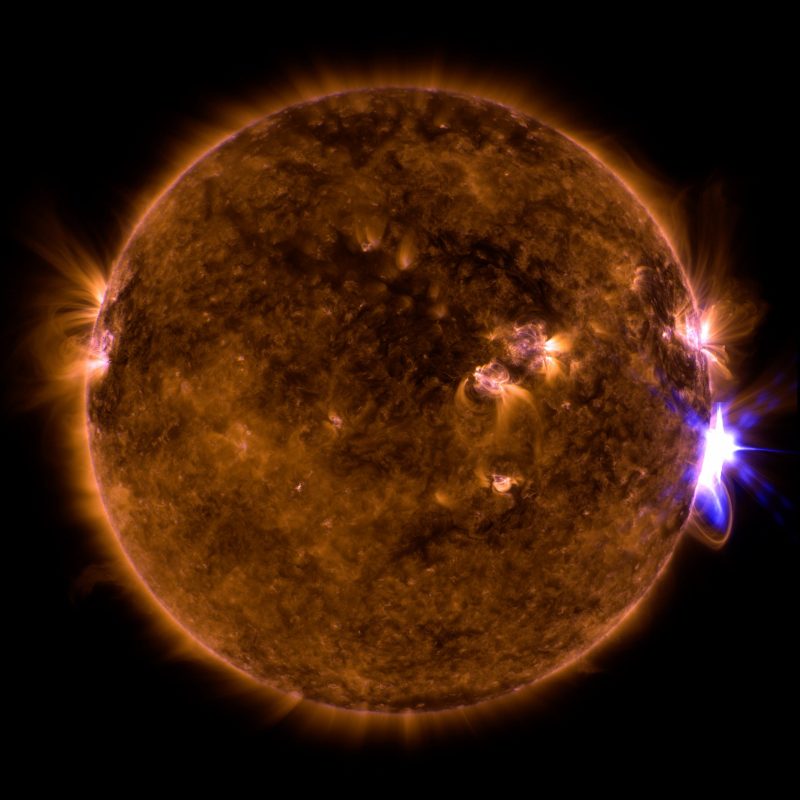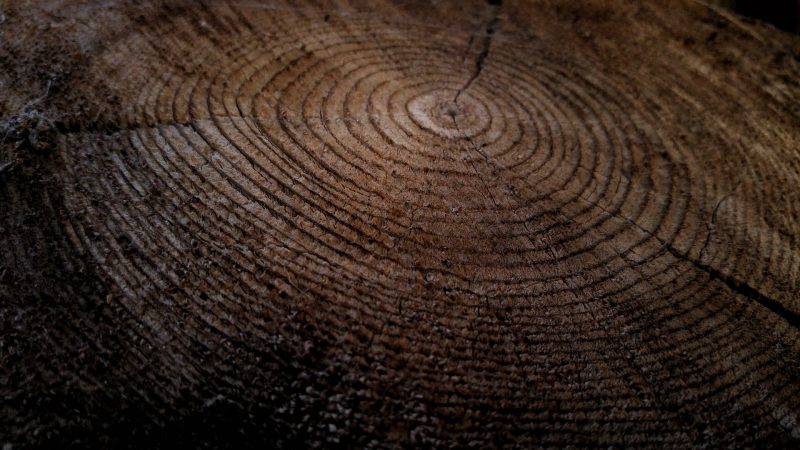
Scientists discover ancient solar superflares
A solar superstorm rocked Earth in 774-775 CE. Scientists uncovered this event in 2012 when analyzing a spike in carbon-14 found in tree rings. Trees around the world bear evidence of the carbon-14 spike, showing that the event was global in scale. Last month, scientists announced that after searching just 1/6 of the available tree ring data, they found evidence of two more events, in 5259 BCE and 7176 BCE.
The scientists submitted their paper for peer review to Nature Communications on August 10, 2021. Their research shows that more solar superflares from the past might exist. So these events may not be all that “rare,” which serves as a warning to future Earth.
For the new discoveries, scientists once again analyzed tree rings. They analyzed trees from Switzerland, Germany, Ireland, Russia and the U.S. When energetic particles from a solar flare interact with Earth’s atmosphere, they can produce carbon-14, which eventually becomes incorporated into the tree as a chemical imprint. One tree ring equals one year in the life of that tree. Therefore, finding a carbon-14 spike on a tree ring provides an incredibly precise date for when the event occurred.

Carbon-14 in tree rings
The Holocene epoch, which began 12,000 years ago and which we are currently in, provides plenty of tree ring data. But it takes weeks of analyzing just to go through one year of data. So having found two more events might change the meaning of “rare” for these events. As the scientists said in their paper:
The increasing number of discovered strong SEP [solar energetic particle] events hitting Earth over the past 10,000 years indicates that they cannot be considered as extremely rare. So far, only 16.5% of the past 12,400 years have been analyzed.
The scientists didn’t stumble onto the dates 7176 and 5259 BCE. Other data led them to deduce these years. Scientists already suspected the 7176 BCE. date through data from ice cores. In ice cores, the scientists look for beryllium 10 and chlorine 36 as signatures of solar flares. Previous analysis showed a beryllium 10 spike around the 7176 date. For the 5259 BCE date, Alexandra Bayliss of the University of Stirling, one of the authors on the paper, noticed a gap in archaeological data around this time.
So, out of the last 10,000-plus years, scientists know of three major solar superflare events that left behind evidence in the way of carbon-14 spikes. With some 85% of tree ring data left to search, we might discover that these strong solar energetic particle events are more frequent than we believed.
What would happen if a solar superflare hit today?
The scientists said in the paper that a solar superflare, such as the ones they found in ancient history through tree rings, would be devastating to our modern world:
The impact of the newly discovered events would have been catastrophic for aircraft, satellites, modern telecommunication and computer systems, if they occurred today.
One of the most famous solar storms in recorded history is the Carrington Event of 1859. This event, which fried telegraph systems – the peak technology of the time – isn’t even detectable in the carbon-14 data in tree rings. So it would be but a whisper compared to the thundering onslaught of a solar superflare. One of the most recent solar events in history is the March 1989 solar storm. With only a minuscule amount of energy that a super solarflare would produce, it nonetheless caused an hours-long blackout in Quebec. A solar superflare striking Earth could take the “worldwide” out of the worldwide web, knocking out undersea cables, and possibly destroying electronic data including banking and health information.
But before you worry too much about a coming technological dark age, take comfort in a fact noted in the paper:
Statistics of sun-like stars suggest that superflares are extremely rare.
While the sun has perhaps undergone more superflares than we once expected, they still seem to be an infrequent event, fortunately.
Bottom line: Scientists found evidence for solar superflares thousands of years ago from evidence in tree rings. Could a solar superflare happen again in the future?
Source: Tree rings reveal two strong solar proton events in 7176 and 5259 BCE
Read more: Record-breaking flare from nearby Proxima Centauri
The post Solar superflares hit Earth multiple times first appeared on EarthSky.
0 Commentaires